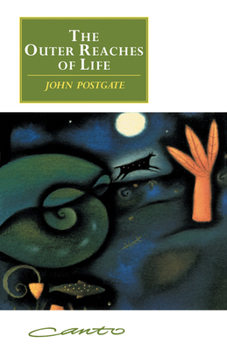The Outer Reaches of Life
Select Format
Select Condition 
Book Overview
John Postgate, one of Britain's leading microbiologists, uses the variegated life-styles of microbes to illustrate the enormous potential of life on this planet. Since the dawn of life on Earth, the... This description may be from another edition of this product.
Format:Paperback
Language:English
ISBN:0521558735
ISBN13:9780521558730
Release Date:September 1995
Publisher:Cambridge University Press
Length:292 Pages
Weight:0.75 lbs.
Dimensions:0.8" x 5.3" x 8.5"
Customer Reviews
4 ratings
Microbiology at its best
Published by Thriftbooks.com User , 17 years ago
Excellent overview of where microbial life can go and thrive. Great overview for any microbiologist.
These things live where?
Published by Thriftbooks.com User , 21 years ago
This is the fascinating story of the many improbable conditions in which life not only manages to exist, but flourish: in boiling water and snowfields, in corrosive acids and alkaline lakes, in swamp muds and the inside of rocks.No special background required.
Bacteria rule the world!
Published by Thriftbooks.com User , 25 years ago
I found this book very enjoyable. John Postgate does an excellent job of describing the different types of environments that bacteria can occupy, from surviving in the deep-freeze arctic to boiling sulfur springs to mineral deposits buried deep within the earth. I was reminded of Stephen Jay Gould's "Full House", where he says that bacteria probably constitute the majority of the biomass of the earth. There's also an excellent chapter on flagella - and it was quite nice to see a good description at the molecular level of the flagella, along the lines of Michael Behe's description in "Darwin's Black Box". One of the themes I found interesting in the book was that of evolution. He mentions examples of how bacteria might have evolved to digest nasty man-made organic chemicals in the environment, through natural selection of degradation pathways of similar molecules. Also presented is a "time-line", starting with the formation of the Earth and moon, about 4,500,000,000 years ago. Essentially bacteria appeared as soon as fossils could be formed - about 3,500,000,000 years ago, and for the next 2,500,000,000 years it was only bacteria, then a few small multi-cellular organisms, and it's only within the past 500,000,000 years or so that more complex organisms appeared (and really only the last 65,000,000 years saw the development of "modern" plants and animals). So essentially bacteria have "ruled the earth" for most of the history, and still occupy an amazing range of places and, as pointed out in Postgate's last chapter, the bacteria are still necessary for establishing new territory. So, for example, he says that in the future it might be possible to send bacteria to Mars or another planet to start preparing the surface, in terms of generating an atmosphere and also the beginnings of a biological ecosystem, for the eventual habitation of humans. In summary, I would highly recommend this book!
This book examines the basic requirements for Earth life
Published by Thriftbooks.com User , 27 years ago
The author, an English microbiologist, describes the extremely harsh environments in which Earth life (particularly bacteria and archaea) can be found. From this survey, he goes on to examine whether life could exist elsewhere (in the solar system or beyond) and what the minimum requirements for such life would be. Postgate is so determined to make the science accessible that he occasionally slips into a condescending tone. This is a small price to pay for some excellent basic information about bacterial lifestyles. The book could also use a bibliography (more condescension toward the non-specialist reader). In general, a first-rate science book




